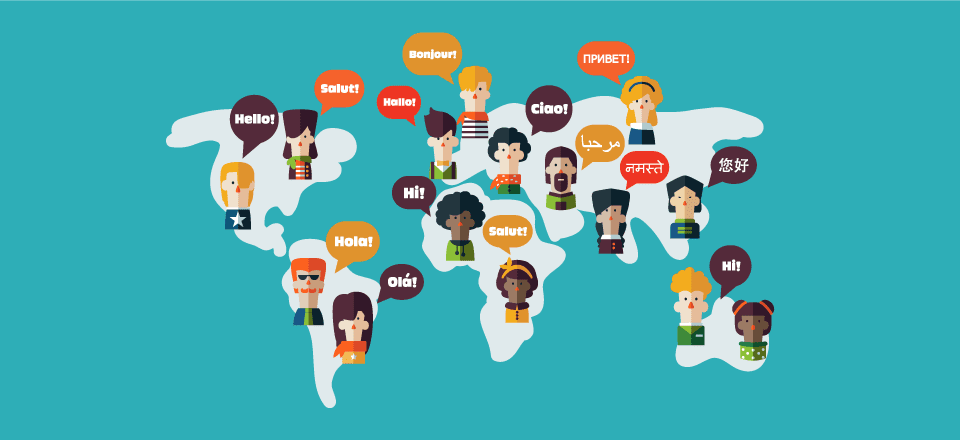Por qué las marcas están invirtiendo en marketing intercultural: una perspectiva de MultiLipi
In today’s hyper-connected and globalized world, the term “cross-cultural marketing” has evolved from a buzzword into a vital strategy for international growth. While multicultural marketing targets several cultural groups within a single country or region, cross-cultural marketing involves deeply embedding cultural awareness into a brand’s core strategy. It requires understanding, appreciating, and acting upon cultural differences to create more authentic, inclusive, and globally effective marketing campaigns. At MultiLipi, we believe in going beyond just translation — our mission is to help brands truly resonate with audiences across linguistic and cultural boundaries. This blog explores why brands are investing in cross-cultural marketing, how it empowers global expansion, and how platforms like MultiLipi are redefining the way companies communicate across cultures. Why Cross-Cultural Marketing Matters for Global Brands Building Meaningful Connections with Local Audiences Cross-cultural marketing enables brands to connect more deeply with their target markets by aligning content with local norms, values, humor, and expectations. This is more than just language — it's about conveying meaning in a way that feels native. Take Coca-Cola’s legendary "Share a Coke" campaign. In China, instead of merely translating Western names, Coca-Cola adapted its strategy to reflect local naming customs. Chinese consumers often use nicknames or social titles instead of first names, so the brand printed bottles labeled with terms like “Talented Girl” and “Real Man.” The outcome? A campaign that felt custom-made and resonated deeply with the cultural psyche. Enhancing Reputation and Building Loyalty Today’s customers expect brands to reflect their values. Cultural inclusivity is no longer a ‘nice-to-have’ but a necessity. Brands that exhibit respect and understanding of local customs are more likely to be welcomed and embraced. IKEA offers another brilliant example. In Western markets, the Swedish brand built its reputation on the DIY model. But when entering China, it recognized that local consumers often prefer ready-made or professionally assembled furniture. Instead of pushing the DIY approach, IKEA partnered with local companies to provide assembly services — a decision that demonstrated cultural intelligence and earned consumer trust. Creating a Competitive Edge A saturated marketplace means it's hard for brands to differentiate solely based on product or pricing. Culture becomes the differentiator. Brands like L’Oréal have excelled at this by embracing localized marketing tactics. The French cosmetics giant made a strategic decision to partner with Wang Yuan, a Chinese pop icon with over 40 million followers on Weibo. This allowed L’Oréal to communicate effectively with younger audiences, significantly improving brand affinity and sales. Understanding Cultural Influences on Buying Behavior Effective cross-cultural marketing begins with an in-depth understanding of what drives consumer choices in different regions. The cultural lens influences everything — from how people communicate and shop to what values they prioritize. Local Traditions and Sensitivities: Cultural faux pas can be brand killers. When Puma released UAE national flag-themed shoes for the country's 40th anniversary, the campaign backfired. In UAE culture, placing the flag on shoes was seen as disrespectful, highlighting the importance of cultural sensitivity. Environmental Priorities: Sustainability is a growing global trend but its intensity varies. For example, a study showed that 61% of people in Hong Kong actively reduce single-use plastic consumption, compared to just 28% in the United States. Brands expanding to environmentally conscious regions must factor sustainability into their messaging. Digital & Social Preferences: The platforms consumers use can differ drastically. In China, WeChat is dominant. In the U.S., platforms like Instagram and Twitter are favored. Knowing where your audience spends time is crucial to campaign success. Communication Styles: Cultures differ in how they prefer information. High-context cultures like Japan or Saudi Arabia favor indirect communication and subtle cues. Low-context cultures such as Germany or the U.S. expect explicit, detailed information. Adjusting tone, visual hierarchy, and content depth can determine whether your message sticks. Core Strategies for Cross-Cultural Marketing Success Deep Market Research You can't market to a culture you don’t understand. Deep, ongoing market research is foundational to any successful global strategy. Surveys, ethnographic studies, focus groups, and social media sentiment analysis reveal invaluable insights. Brands should explore local holidays, regional dialects, values, and even taboos to avoid common pitfalls. Partnering with Local Experts Cultural insiders provide more than just language translation. They understand nuances in humor, symbolism, pacing, and consumer psychology. Partnering with local agencies, content creators, and influencers ensures your messaging feels native. They can also advise on regulations, consumer rights, and promotional practices unique to their region. Applying Hofstede’s Cultural Dimensions Hofstede’s six dimensions help brands structure their understanding of cultural contrasts: Power Distance: Reflects acceptance of hierarchy. In high power distance cultures (e.g., India), authority figures hold greater sway, so messaging should be formal. In low power distance cultures (e.g., Denmark), flatter communication works better. Individualism vs. Collectivism: Brands in the U.S. emphasize self-expression (“Be You”), while those marketing in Korea may highlight group harmony and familial values. Masculinity vs. Femininity: In ‘masculine’ cultures like Japan, performance, success, and strength are prized. Meanwhile, ‘feminine’ cultures like Sweden focus on quality of life, support, and modesty. Uncertainty Avoidance: Cultures like Greece prefer detailed product guarantees and explicit instructions. Others like Singapore are more open to innovation and risk. Long-Term Orientation: This dictates messaging related to savings, education, and career. China favors long-term benefits, while American messaging can highlight short-term wins. Indulgence vs. Restraint: Indulgent cultures embrace fun, leisure, and optimism (e.g., Brazil). Restrained societies lean toward rules, moderation, and discipline (e.g., Russia). MultiLipi: Powering Smart Localization at Scale A Translation Platform Built for Cultural Depth MultiLipi doesn’t just translate words — it translates context. We ensure that your brand’s tone, terminology, and SEO strategy travel flawlessly across borders. AI-Human Hybrid Translation: MultiLipi combines AI-driven speed with human quality assurance to ensure accuracy and nuance. Visual Context Editing: Easily adapt content to fit with layout designs via our live editor. Multilingual SEO: We handle URL structuring, hreflang tag generation, and metadata translation for optimized search visibility. Style Guide and Glossary: Enforce brand guidelines in all languages to maintain a consistent identity. See how Everyone.org scaled globally using MultiLipi’s cross-cultural localization engine. Real-Time Localization at Your Fingertips Our platform allows you to translate and deploy in real-time. Whether you're handling user-generated content, blogs, or e-commerce catalogs, MultiLipi ensures cultural alignment and linguistic precision at scale. Overcoming Key Challenges in Cross-Cultural Campaigns Addressing Language Barriers Language isn’t just a tool — it’s a cultural artifact. Translating with nuance is essential. With support for over 110 languages, MultiLipi empowers brands to handle: Technical documentation Legal disclaimers Chatbots and dynamic text Email marketing and customer support Adapting to Local Norms Every market has its own regulatory, economic, and political terrain. Our centralized CMS integration allows for agile campaign testing, rapid deployment, and consistent localization across digital assets. Final Thoughts: A Future-Ready Strategy Cross-cultural marketing is not just a campaign trend — it’s a business strategy. As the world becomes more interconnected, your ability to personalize experiences at a cultural level will define your brand’s global success. With MultiLipi, you gain: Translation powered by AI and refined by experts An intuitive dashboard to manage localization Built-in SEO features to drive regional visibility Tools to ensure brand voice remains intact Start your global journey today. Try MultiLipi for free.
























